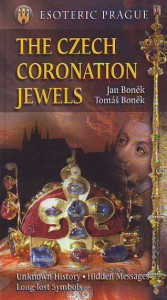Czech Coronation Jewels
By Tracy A. Burns
 Declared a Czech cultural monument in 1962, the Bohemian coronation jewels will be on display at Prague Castle’s Vladislav Hall in the Old Royal Palace from May 10 to May 19 in 2013. The fourth oldest crown in Europe and other treasures will be shown to the public on the occasion of the election of new Czech President Milos Zeman. Visitors last had the chance to see the jewels in 2008, and the public was only allowed to view them nine times during the 20th century.
Declared a Czech cultural monument in 1962, the Bohemian coronation jewels will be on display at Prague Castle’s Vladislav Hall in the Old Royal Palace from May 10 to May 19 in 2013. The fourth oldest crown in Europe and other treasures will be shown to the public on the occasion of the election of new Czech President Milos Zeman. Visitors last had the chance to see the jewels in 2008, and the public was only allowed to view them nine times during the 20th century.
Locations of the coronation jewels throughout the centuries
The ornate artifacts consist of the Crown of Saint Wenceslas, the royal orb, the royal scepter, coronation vestments of the Kings of Bohemia, the Saint Wenceslas’ sword and the gold reliquary cross. Originally kept in Prague, the coronation objects were moved to nearby Karlstejn Castle during the 14th century. They were then moved several times and transferred to the Imperial Treasury in Vienna in 1631. The royal items again made their way to Prague for the coronation of Bohemian King Leopold II in 1791.
The seven keys
Since then, they have been kept in St. Vitus’ Cathedral, stored in a special chamber that has seven locks. There are seven key holders: the President, the Prime Minister, the Archbishop, the Chairperson of the House of Deputies, the Chairperson of the Senate, the Dean of the Metropolitan Chapter of St. Vitus’ Cathedral and the city’s mayor.
The Crown of Saint Wenceslas
The crown and sword are named after Saint Wenceslas, the Czech patron saint who was Duke of Bohemia from 921 until his assassination at the hands of his own brother in 929 or 935. The 22-carat gold crown was created for Holy Roman Emperor Charles IV in 1347. It is topped with a cross, inside of which supposedly is a thorn from Christ’s crown of thorns. This treasure is made from 19 sapphires, 30 emeralds, 44 spinels, 20 pearls, one ruby, one rubellite and one aquamarine. It weighs 2,475 kilograms.
The royal scepter and royal orb
The 18-carat gold royal scepter is composed of four sapphires and 62 pearls as well as a very large spinel. The royal orb, also 18-carat gold, is adorned with scenes from The Old Testament and The Book of Genesis. One section shows David versus Goliath, for instance. A new orb and scepter were created in the 16th century. The fate of the originals made for Emperor Charles IV is unknown.
Coronation robes, the sword, and more
Bohemian kings donned the coronation robes when they were crowned from 1653 to 1836. The red garment has a silk-like texture and ermine lining. Saint Wenceslas’ sword, which was also used for knighthood ceremonies, is the oldest relic as the blade hails from the 10th century and the hilt dates from the 13th century. The leather case for the crown was created in 1347 and is decorated with four symbols – the imperial eagle, the Bohemian lion, the emblem of the Archbishopric of Prague, and the coat-of-arms of Arnost of Pardubice, the first Archbishop of Prague and an advisor to Emperor Charles IV.
A legend about the crown
According to a legend, anyone who tries on the crown will die within a year. Some say that Reinhard Heydrich, Nazi Deputy Reich-Protector of Bohemia and Moravia during World War II, put the crown on his head less than a year before he was assassinated by members of the Czech resistance.
The reproductions
The public can see copies of the jewels in a permanent exhibition at the Old Royal Palace of Prague Castle, though the reproductions will not be on display from May 2 through May 21. The authentic jewels were shown to the public for the first time in 1929, marking 1,000 years since the death of Saint Wenceslas.
More details about the exhibition
The coronation treasures will be on display daily from 9 am to 6 pm. The exhibition is free, and no tickets will be issued. The entrance is through the south garden.



